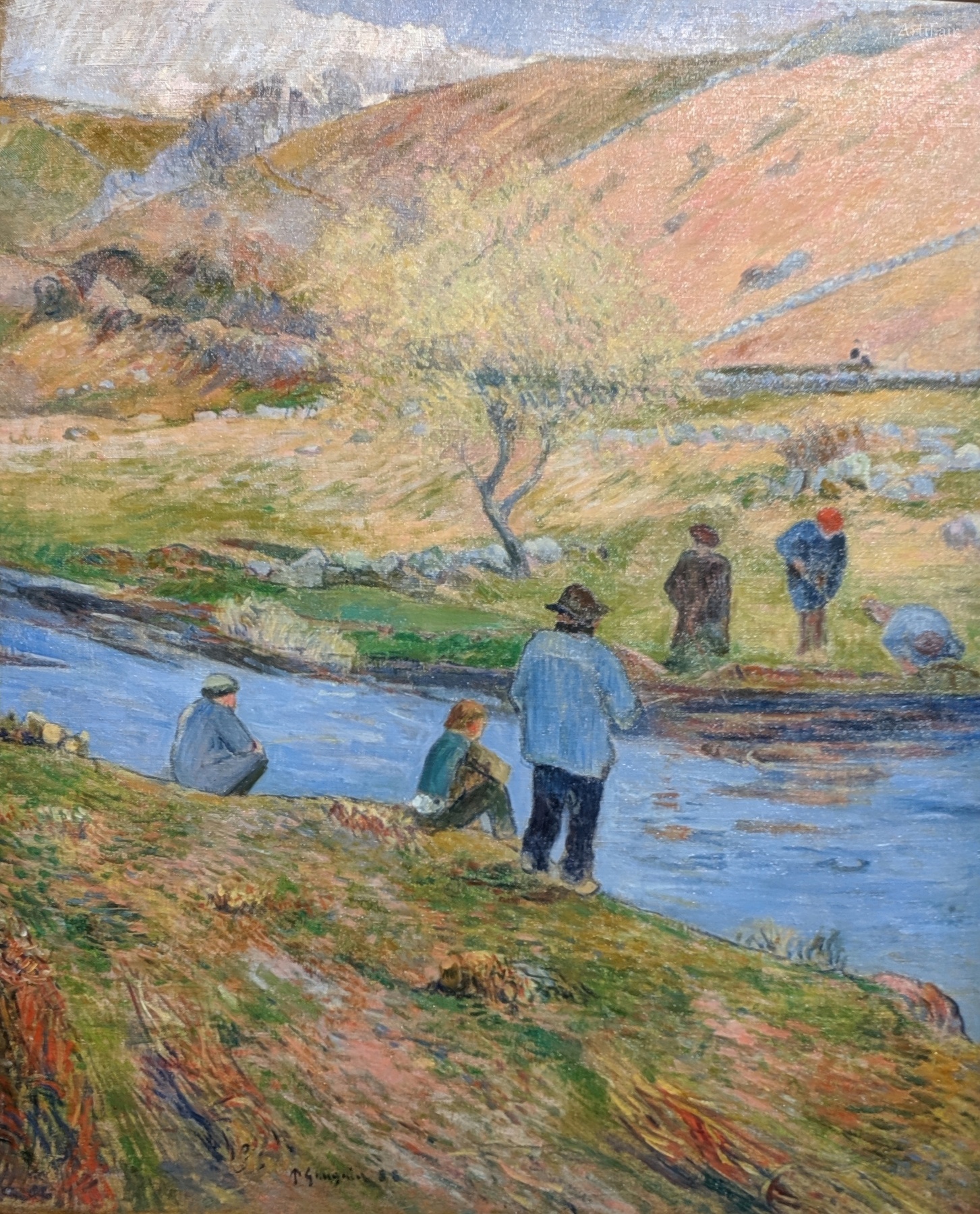
Art Appreciation
This evocative scene captures a quiet moment by a river where several figures, likely Breton fishermen and locals, engage in various poses along the water's edge. The composition is gently layered; in the foreground, a man stands fishing while two others sit contemplatively by the water, their backs turned to the viewer. Further across the riverbank, three more figures interact or observe, drawing the eye across the canvas from near to far. The brushwork is relaxed yet deliberate, with a softness that enhances the pastoral tranquility. Colors are earthy and muted—soft greens, browns, and pale blues—contrasted against warmer mountain slopes in the background, giving a natural, serene atmosphere.
The artist employs an impressionistic technique, blending color and form with a sense of immediacy, yet the figures retain enough definition to convey their human presence and purpose. The subtle suggestion of wind or movement in the trees and water adds life without disrupting the peaceful ambiance. Painted in 1888, this work reflects an artistic period where rural life and the dignity of labor were esteemed subjects, emphasizing a connection between humanity and its environment. The emotional impact lies in its quiet dignity, a respectful observation of the fishermen’s humble, everyday existence, filled with calm and thoughtful introspection.